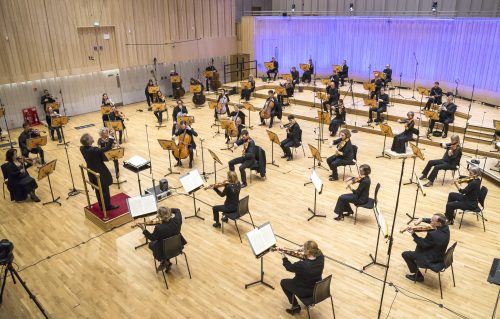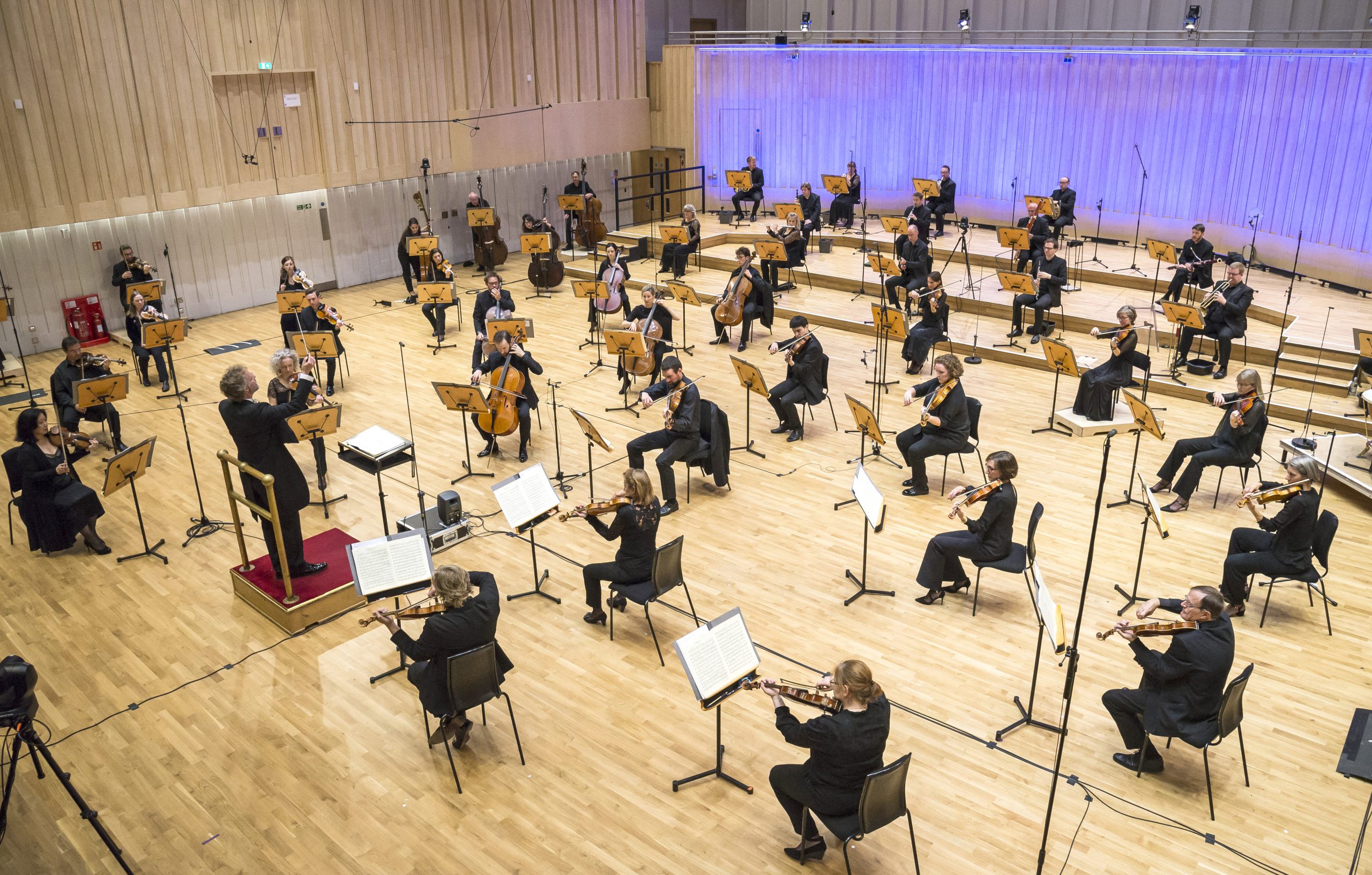 United Kingdom Haydn, Saint-Georges, Beethoven: Maya Iwabuchi (violin), Royal Scottish National Orchestra / Thomas Søndergård (conductor). Live-streamed from the RSNO Centre Glasgow, 9.10.2020. (SRT)
United Kingdom Haydn, Saint-Georges, Beethoven: Maya Iwabuchi (violin), Royal Scottish National Orchestra / Thomas Søndergård (conductor). Live-streamed from the RSNO Centre Glasgow, 9.10.2020. (SRT)

Haydn – Symphony No.82 ‘The Bear’
Chevalier de Saint-Georges – Violin Concerto
Beethoven – Symphony No.3 ‘Eroica’
Well, I suppose it is the next phase of the new normal. While concert halls in England are struggling back into life, complete with live audiences, north of Hadrian’s Wall the prospect of in-the-flesh performances seems as far away as ever. With Scotland now adopting some of the most draconian lockdown restrictions in Europe, I cannot imagine myself back in an Edinburgh or Glasgow concert hall this side of Easter, though every word of that sentence pains me to write.
It is not all doom and gloom, though. At least the orchestras are allowed to be back in the same room together, even if they are not allowed an audience, and the RSNO have launched their first ever digital season to help see us through the gloom of the Covid-19 winter. Unlike many others, they are charging for tickets, which is an adventurous strategy in our content-saturated age. However, as I have said before, it sends out an important signal that live music is valuable and worth paying for, and the product itself is pretty impressive.
The orchestra plays in the hall that constitutes their Glasgow home, so they know it well, though to my ears the space is a little too big for the sound. Some of the tuttis in the Beethoven sounded a little tinny, and it felt like there was a little too much air around the sound in the Haydn (though admittedly, in situations like this, it is impossible to tell how much is attributable to the vicissitudes of your own audio equipment).
This first programme is built around the extraordinary career of Joseph Bologne, Chevalier de Saint-Georges, who was born the son of a slave woman and a white French planter in Guadeloupe, but who grew to (almost) the top of French society, fighting in the revolutionary wars and conducting one of Paris’s top orchestras. He commissioned Haydn’s Paris symphonies, and his career trajectory takes us, via the French Revolution, to Napoleon and Beethoven’s ‘Eroica’.
Unfortunately, his violin concerto doesn’t really fit the image of the mould-breaking freedom, fighter. It is a piece of genteel Rococorie, all fashionable powdered wigs and dainty frilly cuffs. It is perfectly nice, in a Laura Ashley sort of way, but listening to it I never felt I was present at the unveiling of a neglected masterpiece. In fact, my pulse never really quickened at all. The outer movements are the definition of background music and, while the slow movement is marked con espressione, there wasn’t much to express. Soloist (and RSNO leader) Maya Iwabuchi played her part without so much as breaking a sweat. I daresay she could probably have done it in her sleep. There are so many neglected violin concertos out there, why revive this piece of vanilla? Surely it wasn’t just so that the RSNO could demonstrate their zeitgeist credentials?…
Placing him next to Haydn demonstrates how far ahead of the game the Austrian composer was. This performance of the ‘Bear’ Symphony bustled with life, the orchestra slimming down to chamber size with a pert harpsichord sitting in its midst. There was a zing to the sound that fits the music extremely well, helped by using period trumpets and timps, and not once did I feel that the orchestra overwhelmed the music’s natural panache.
I haven’t heard Thomas Søndergård conduct Haydn before, but he suits this music rather well, enjoying the humour of it, such as the drone that comes out of nowhere at the end of the slow movement, and relishing the liveliness of Haydn’s musical picture. His Beethoven seemed to benefit from the cross-fertilisation, his reading of the ‘Eroica’ Symphony sounding more period-inflected than you would normally expect from this source. They still had those natural brass and timps, and the strings played with minimal vibrato, with the social distancing around the players lending more transparency to the sound. Tempi were natural, too, with pacey outer movements, and a funeral march that was neither gloomily lugubrious nor self-consciously fast. Just about right, in fact, though speeding up for the major key interlude took a bit of getting used to.
The visuals are very well done, and the camerawork seems perfectly natural throughout. One memorable long shot shows the principal oboe during his solo in the funeral march’s major-key episode, turning from pink to purple to blue in what seems like a superhuman feat of breath production. Amazingly, he survived the whole symphony.
It still hurts terribly that we are not watching them in a busy Usher Hall, without having to worry about camera angles or sound amplification; but at least the orchestra is here and performing, something they must be hugely relieved by, too. And fair play to them for making the best of what could otherwise have been a completely cancelled season. They deserve to do well with it.
Simon Thompson
Available to see if you click here and the RSNO’s digital season runs to 26 February.
